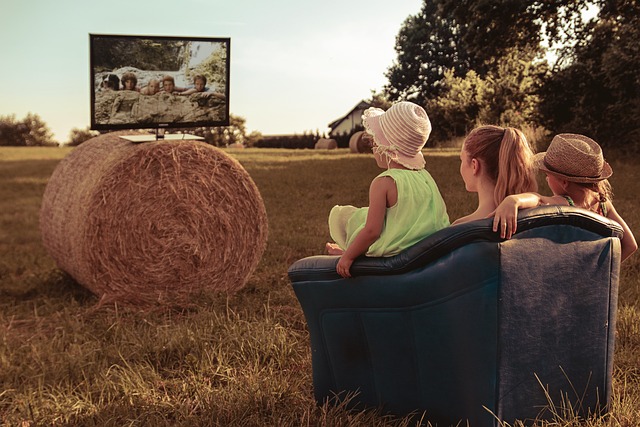IPTV vs Traditional TV

krooz tv: The Rise of IPTV and the Decline of Traditional TV
The way people consume television has drastically changed over the past decade. What was once dominated by bulky cable boxes, satellite dishes, and rigid programming schedules has now evolved into a flexible, on-demand streaming experience. At the heart of this transformation is IPTV (Internet Protocol Television) — a technology that’s reshaping the future of TV in 2025 and beyond.
What is IPTV?
IPTV delivers television content over the internet instead of traditional broadcast methods like cable or satellite. It allows users to stream live TV, watch on-demand shows, and even pause or replay content using a stable internet connection. Unlike traditional TV, IPTV isn’t tied to specific broadcast schedules or physical infrastructure, offering a much more dynamic and interactive experience.
There are three main types of IPTV services:
Live Television: Real-time broadcasts streamed over the internet.
Time-Shifted TV: Allows users to replay or catch up on broadcasts they missed.
Video on Demand (VOD): Users select from a library of shows or movies and watch whenever they want.
This internet-based approach opens up new possibilities for content delivery, accessibility, and user control.
Krooz tv: Why Is IPTV Gaining Popularity?
There are several reasons why IPTV has grown rapidly and continues to gain momentum in 2025:
- Flexibility and Convenience
With IPTV, viewers are no longer bound by fixed schedules. You can watch what you want, when you want, and on any device—be it a smart TV, phone, tablet, or laptop. This level of flexibility has become a necessity in today’s fast-paced world. - Cost-Effective Solutions
Cable and satellite TV packages are often expensive and bloated with channels viewers never use. IPTV platforms offer more affordable, customizable subscription models that let users pay for only the content they actually want. - Global Content Access
IPTV makes it easy to access international content that’s often unavailable on traditional TV platforms. From niche documentaries to foreign-language dramas, IPTV brings a global media library to your fingertips. - Higher Quality Streaming
With advancements in broadband and fiber-optic internet, IPTV now offers high-definition and even 4K content with minimal buffering. Some services use adaptive streaming technology to optimize playback based on the viewer’s internet speed. - Personalization and Interactivity
Many IPTV services offer personalized recommendations, search functions, watchlists, and interactive interfaces. This makes content discovery easier and viewing more enjoyable.
Krooz tv: The Decline of Traditional TV
As IPTV rises, traditional TV is facing a steady and inevitable decline. The reasons are clear:
- Rigid Viewing Experience
Scheduled programming and lack of content flexibility have pushed users toward platforms that adapt to their lifestyles, not the other way around. - Outdated Infrastructure
Cable and satellite systems rely on physical infrastructure that is costly to maintain and upgrade. IPTV, by contrast, only needs an internet connection, making it more efficient and scalable. - Declining Subscriber Base
In many countries, cable and satellite providers are losing millions of subscribers annually. Cord-cutting has become mainstream, and younger audiences are especially disinterested in traditional TV services. - Advertising Fatigue
Users are increasingly turned off by long, unskippable ads on traditional networks. IPTV services often include options for ad-free experiences or targeted, less intrusive advertising.
Krooz tv: Market Trends and Industry Shift
Media companies are paying attention. Many traditional broadcasters are launching their own IPTV platforms to remain relevant. Sports networks, movie studios, and even local TV stations are moving online.
Here are a few key trends:
Hybrid Streaming Models: Some providers offer a mix of live IPTV channels and VOD content, bridging the gap between old and new.
Smart TVs with Built-In IPTV Apps: Most modern TVs come pre-loaded with IPTV apps or app stores where users can download their preferred services.
Increased Competition: With low barriers to entry, more IPTV providers are entering the market, driving innovation and price competitiveness.
IPTV in 2025: What Viewers Can Expect
The IPTV experience in 2025 is more advanced, intuitive, and immersive than ever before. Here’s what viewers can look forward to:
AI-Powered Recommendations: Content suggestions based on your watch history, preferences, and even mood.
Multi-Device Syncing: Seamless transitions between devices, allowing you to pause on your phone and resume on your TV.
Cloud DVR and Offline Viewing: Record shows in the cloud and download content for offline use.
Interactive and Social Features: Chat, polls, and watch parties integrated into live broadcasts.
Voice and Gesture Controls: Enhanced user experience with smart assistants and motion sensors.
for more information visit : https://krooz-tv.me/
